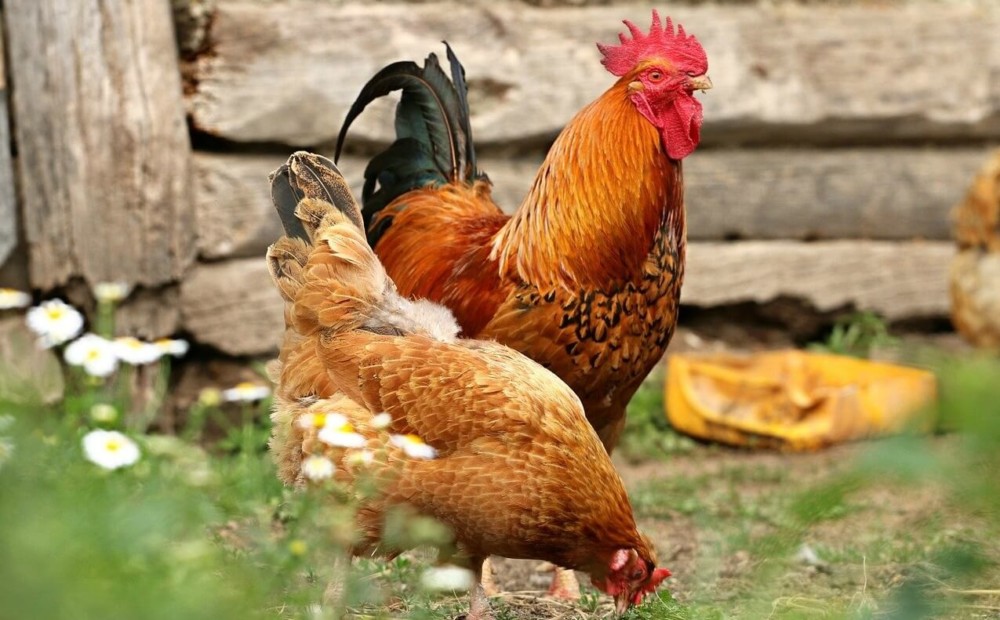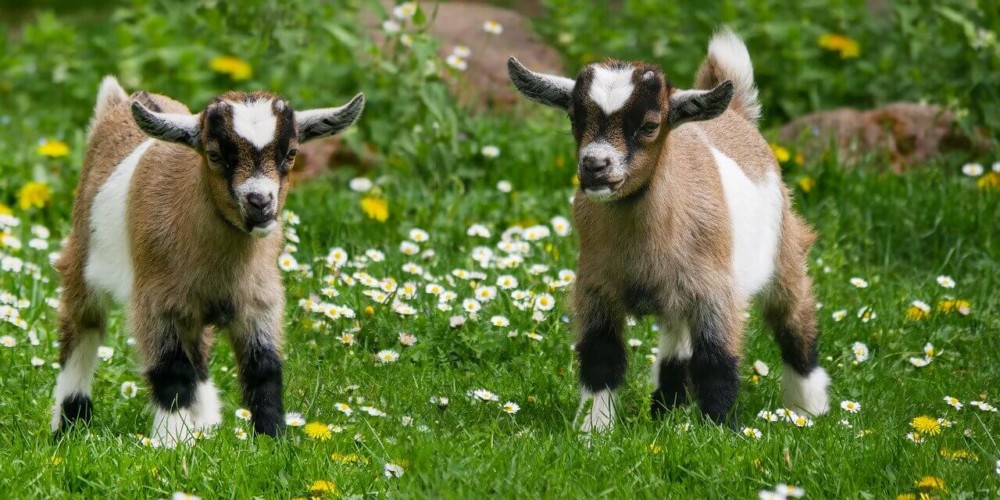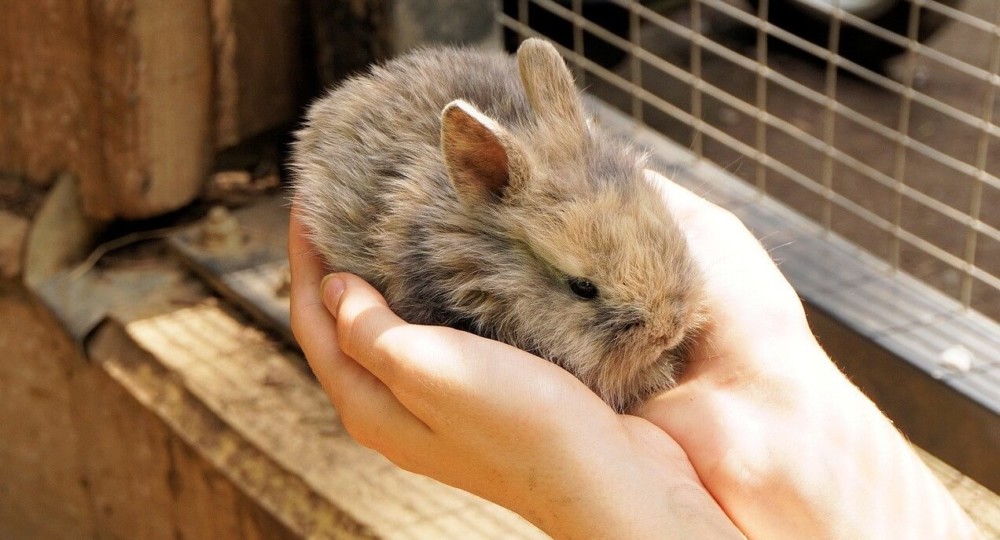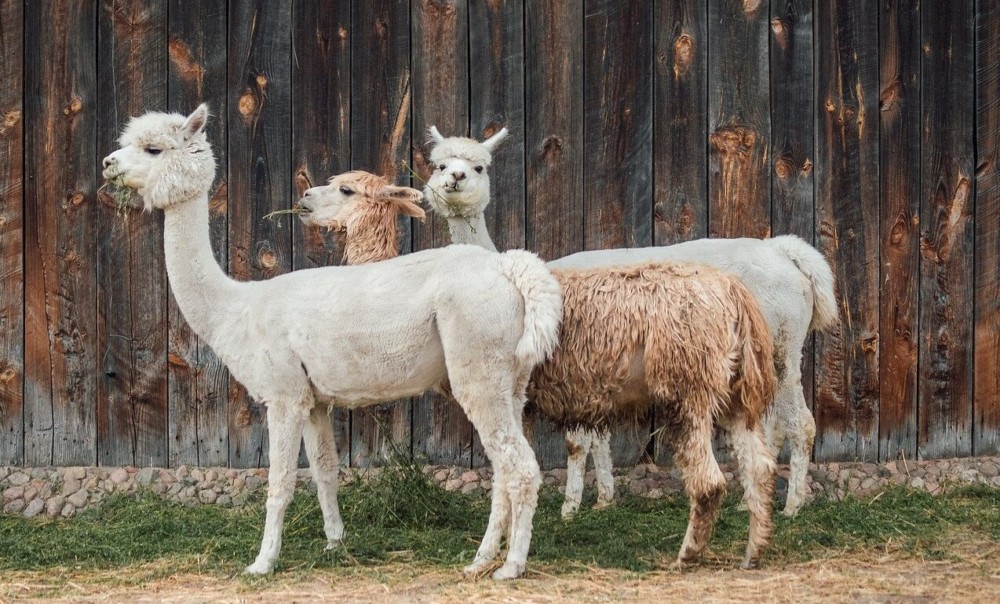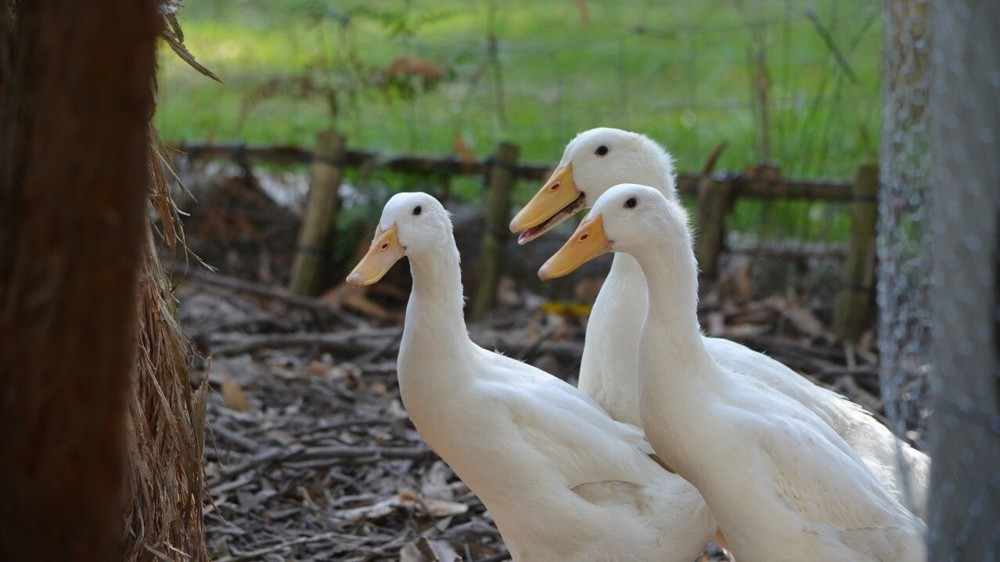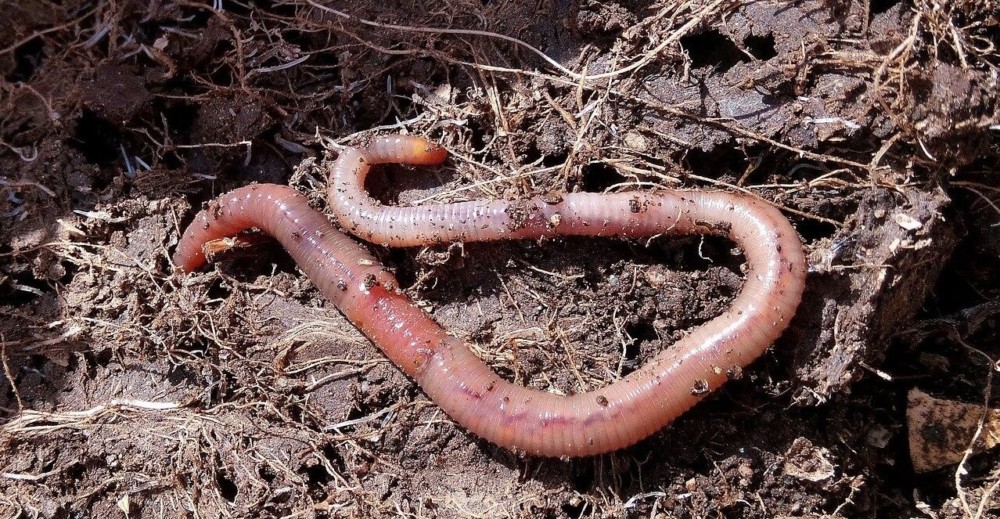Do you have a few acres or are you looking to purchase a small homestead? Raising farm animals for a profit with a few acres is a different endeavor than if you have hundreds of acres to raise large herds of animals. Check out this article on the most profitable livestock to raise if you have more land.
What’re the most profitable animals to raise on a small farm? The most profitable animals to raise on a small farm are animals that don’t take a lot of space, reproduce easily, and cost little in the feed. The top 10 most profitable animals for small farmers are:
- Chickens: Eggs and Meat
- Honey Bees
- Ducks: Eggs and Meat
- Goats
- Quail
- Rabbits
- Sheep
- Worms
- Fish
- Alpacas and Llamas
This list didn’t include cattle, pigs, or horses because it is extremely difficult to make a profit on those animals when you only have a few acres and have to purchase feed. Feed drastically raises the cost of raising certain animals and will eat into your profits.
Let’s dive into each animal and how you can make it more profitable. Then, we’ll cover other factors of raising profitable farm animals.
1. Chickens
Chickens are one of the lowest cost animals to raise, but they are very popular for many uses. This makes chickens a profitable animal. Bill Gates recently hailed chickens as the best animal to raise people out of poverty in Africa.
Chickens provide both eggs and meat. It’s important for you to know how you want to make money on your chickens. To make chickens the most profitable, you will want to choose chicken breeds that are either top egg layers or great meat chickens. A lot of breeds are touted as great dual-purpose chickens.
That’s great.
But, if you have a dual chicken breed that lays half the eggs of another breed, you will make half the money. Likewise, if you use that same breed and the cocks grow twice as slow as a meat chicken breed, you will spend double the cost on feed for the amount of meat you produce.
Chickens For Eggs
One important factor in making chickens the most profitable is to have access to a rooster. If you purchase even a half dozen chickens and a rooster, you can hatch a significant number of those eggs.
Your flock will significantly increase over the course of a year. Most chicks will start laying eggs between 3-5 months. Some breeds lay more than 300 eggs on average a year. If those eggs are fertilized, you can grow your flock of 6 hens to a flock of over 40 chickens within 8-9 months (or less).
At that point, the eggs your hens produce will be significant. Most of the male chicks can be used for meat as young pullets and the female chicks can be used for eggs. You’ll want to keep a few males to keep the eggs fertilized if you are still growing your flock or to replace hens that slow or stop their egg production.
Chickens have relatively low feed costs. They can eat kitchen scraps, compost, and vegetable waste that we usually throw away. They don’t do as well with high salt, fat, or sugary foods.
As a general rule, most breeds are great at foraging and finding bugs and vegetation during warm months.
If you live in an area that stays warm, or above freezing for most of the year, chickens will be even more profitable. Cold weather areas will require supplementing your flock’s feed as well as additional tools to help your flock stay healthy during sub-freezing months.
But, that doesn’t mean they won’t still be profitable. With a little planning, many cold-weather chicken breeds continue to strongly lay eggs all winter long.
- Use a rooster to hatch eggs and grow your flock without additional expense
- Free-range chickens and feed kitchen scraps to save on food costs
Resources You’ll Need To Make Money on Chicken Eggs
One of the most important things you will need to do is provide a safe place for your flock. Nothing is more frustrating and kills the profit of chickens faster than to have an animal get access to your flock and kill all or most of your hens.
This can happen in the city with a neighbor’s dog or in the country with raccoons, weasels, foxes, coyotes, and a myriad of other predators.
- Safe area and coop for your chickens
- Rooster
- Supplemental feed during cold months
What You’ll Sell: Eggs and chicks. Occasionally you can sell the male pullets for meat. They will sell for less than regular meat chickens but can help to supplement your total profits.
Chickens For Meat
If you want to raise primarily meat chickens, you should purchase a breed of chicken often called a broiler or meat breed. Meat chicken breeds grow significantly faster than other breeds of chickens.
Plus, their feed to meat ratio is much lower than regular chicken breeds. This means that you will spend less money on feed and be able to sell your chickens much faster. Some meat breeds can self-populate so you can continue to raise a new batch if you have a rooster.
But, other breeds, such as the Cornish Cross, grow so fast that they don’t live long because of the inherent health issues from their rapid weight gains.
Meat chickens usually need to be given feed, they don’t grow as fast when they only free-range. Broilers are usually ready to butcher at about 2-4 months, depending on the breed. You will save money if you butcher the chickens yourself over paying someone else to do it. Across the USA, the average cost to have a chicken butchered and dressed is about $5 a chicken. Every state has its own laws, but most states allow for the chicken raiser to sell directly to the consumer at farmer’s markets and other direct sales. Additional regulations may be required if you are selling to a reseller.
Resources You Need To Sell Meat Chickens
You will need a safe place to raise the chickens. Meat chickens are usually raised during the summer months. But, they don’t do as well in the heat because of their rapid weight gain. If you live in a hot climate, you may need a way to provide a cooler environment for your meat chickens.
Some farmers will artificially cool the chicken coop down during warm summer months or use a shed so the chickens have a place to retire when they get too hot. Adequate water is also vital. .
You will also need to buy meat chickens to raise. Most of the most profitable meat chicken breeds do not reproduce well and must be bought from a hatchery.
Shrink bags to freeze the chickens in.
What You’ll Sell
Meat chickens. Sell them live at a discount or butcher them and sell them ready to cook.
2. Honey Bees
Honey bees are arguably one of the most important animals for our food supply, but they are under threat. Not only do they provide healthy honey, but they pollinate the majority of the world’s crops.
Honey bees provide very little land and have very little cost associated with raising them. This makes them extremely profitable once you have several healthy bee colonies up and thriving.
You will need some knowledge of raising bees and shouldn’t be allergic to bee stings. In the USA and many other countries, you should purchase a queen bee for your hive that isn’t a mix of the invasive African bee.
Honey bees are not aggressive bees. But, many North American native honey bees have cross-bred with the African bee. The aggression of an individual hive will be determined by the aggression of the queen bee.
You will also need to know how and when to harvest the honey in your hive. Harvesting too late in the season can cause your hive to starve to death or be killed by more aggressive wasps. Some beekeepers don’t use sugar water to supplement their hive’s diet so that they can harvest more honey while others prefer to allow their bees to eat some of the honey because it provides better hive health.
Honey has amazing health benefits and eating local honey helps many people to combat hay fever and seasonal allergies.
In addition to selling the honey, you can also rent your bees out to local farmers to help them pollinate their crops.
Plus, if your hive is healthy, it will usually split 1-2 times a year, sometimes more. Once you have as many colonies as you want, you can sell the additional bee colonies to others interested in raising bees.
Resources You Need To Make Money on Bees
You’ll need to have a beehive. There are lots of styles of beehives and many that are easy to build or cheaper to purchase. In addition, you’ll also need protective clothing, a pure honey bee queen, and some basic tools for harvesting the honey and beeswax.
What You’ll Sell:
Honey, beeswax, bee colony rentals, beeswax products such as candles or soaps, Bee colonies.
3. Goats
Goats are such an easy and versatile animal to raise and goat milk and other products are exploding in popularity.
Many breeds of goats have 2 kids per litter. You can start with just a couple of females and a billy goat. Within a year, you could have as many as 4 kids. Within a few years, your herd can be quickly large. You can also keep some of your kids and sell some of them each year. Adult goats usually sell for about $150-400 each. This quickly becomes profitable.
Goat meat has a growing demand. The majority of goat meat sold in the USA has to be imported because there aren’t enough goat raisers in the U.S.
Goat milk is also popular because it doesn’t cause a lot of the issues for many people that cows milk causes. Plus you can make soaps, cheese, butter, yogurt, and other products from it.
Renting goats out is also a popular way to make money off your goats. Goats love to eat thistles, bushes, and many invasive species. They have become a popular way to control weeds in public lands and on private property.
Check out our guide on raising goats here.
Resources You’ll Need For Goats
Even a few goats can be raised on a small area of land. Heavily pastured land can feed as many as 6-8 goats per acre. You’ll want shelter or a lean-to to protect your goats from the sun, rain, or wind.
What You’ll Sell:
Goat meat, milk, by-products such as soap, cheese, yogurt, goat rentals
4. Rabbits
Rabbits are an underutilized profitable farm animal. Rabbits are popular for pets and their pelts. In addition, rabbit meat is very healthy, high in protein, and lower in calories. Rabbits reproduce very quickly and eat relatively low.
In fact, rabbits have one of the lowest food to meat ratios of any animal, making them very profitable. Plus, they can easily be raised with very little land.
Rabbit pelts are popular for clothing items and crafts. As pets, rabbits are also extremely popular. Different breeds are more popular for pelts versus meat or pets.
Even a couple of does and a buck can quickly reproduce and grow your colony rapidly. Female rabbits can become pregnant almost immediately after giving birth and even if you provide a recovery time period, they still reproduce quickly.
Add a little extra profit to your rabbit endeavors by selling the manure. Rabbit manure is considered a very powerful fertilizer.
Raising rabbits is extremely easy, flexible, and cost-effective. Many homesteaders raise rabbits to gain a higher level of self-sufficiency.
Check out our guide on how to raise rabbits here.
Resources You’ll Need To Raise Rabbits:
You’ll need cages or colony space for your rabbits. You’ll also need a way to keep them safe as they are very predator vulnerable. You’ll also want to consider their feed options. If you have land, rabbits are very adaptable and will eat vegetation already around.
If you are raising them in hutches or cages, you will need to plan on the type of feed you’ll provide.
What You’ll Sell:
Rabbit meat, pelts, bunnies as pets, and manure.
5. Alpacas and Llamas
Purchasing your first alpacas will cost more than any of the other animals on this list. Alpacas can cost as much as 1-2k for a female and high-end alpacas can cost 10-30k. It’s important that you decide how you want to make money on your alpacas.
High-end alpacas require a specific market, but even alpacas that sell for 1-2k still have high-quality fur that can be sold for clothing and other goods.
Llamas don’t cost quite as much, and can still be bred and sold, used for pack animals, entertainment, and sentinels to keep other animals safe.
Resources You’ll Need:
A good pasture to graze your alpacas or llamas on, but it doesn’t have to be very big. Alpacas eat very little. At least 2 so they don’t get lonely, and a lean to shelter from bad weather. Alpacas and llamas are sturdy animals and don’t even have to have a full-fledged barn.
What You’ll Sell:
Baby alpacas, wool and fiber, rides, rentals.
6. Pekin Ducks
Pekin ducks are probably the most familiar duck around. They are the traditional “farm duck.” They can be very profitable for several reasons. First, their eggs are larger than chicken eggs so they sell for more per dozen. Two duck eggs are the same size as three chicken eggs.
Secondly, Pekin ducks can lay nearly every day and can lay in the winter months. And, duck meat is really good. Duck meat sells for more than chicken meat does because it’s more tender, is dark, and has a great flavor.
The first time I ate duck, I was hesitant because so many people state that duck has a gamey flavor. But, we were careful to butcher a duck in a way that didn’t cause it fear or pain. Maybe that made the difference, but the duck was tender and good even though it was nearly a full year old.
Guide to raising ducks, click here.
Resources You’ll Need To Raise Ducks:
Ducks don’t require a lot. They love a little space, a duck house, and fencing to protect them from predators. They are fairly easy to raise. Plus, they do a great job of keeping the bugs off your garden plants without wrecking your garden.
What You’ll Sell:
Eggs and duck meat.
7. Sheep
Sheep can reproduce. Sheep ewes can have between 1-4 babies per litter. Larger litters will need to be supplemented with milk as the mama probably won’t be able to keep up with the milk needed by all those babies.
But, even a few sheep can grow into a great herd within a couple of years. Raise the females and sell the male babies off for meat.
Mutton is very popular and healthy. Sheep are generally slaughtered at about 5-6 months, which keeps the meat tender.
As with many animals, if you have enough land to allow your sheep to graze, then you will save a lot on feeding costs. Sheep mostly eat hay and you’ll need an acre per two sheep. You can add up to 4 sheep per acre but will need to take active measures to keep the grass and alfalfa growing to feed that many sheep.
How to raise sheep for beginners.
Resources You’ll Need:
Sheep are possibly one of the most predator vulnerable animals. Sadly, they tend to die easily when hurt and they don’t defend themselves very well. You will need to make sure that you have protective fencing.
Electrical fencing works well to keep predators out as does a sheepdog.
What You’ll Sell: Sheep allows you to sell the young to others looking for sheep, meat, wool, and milk.
8. Quail
Quail are very popular at fancy restaurants and they take very little space to raise. In addition, quail are also wanted for hunting or eggs. Quail can be raised outside in a modified chicken coop or in cages on a small property.
Even many people in cities raise quail in very small areas. They eat little and their eggs are becoming increasingly popular.
Quail are pretty easy to raise, but they can scare easily. Try to acclimate them to a noisier area little by little so they get used to it. If you live in a more rural area, then adding an exterior fence to keep animals and other scares away will help your quail to not be scared.
How to raise quail for beginners.
Resources You’ll Need: Cages or a roofed-coop. Quail fly quite well and will escape if you don’t have a roofed area and they aren’t in cages. Because quail can fly suddenly up when startled, the roof should be at least 8-10 feet high. This will prevent them from hitting their heads and killing themselves.
What You’ll Sell: Quail eggs or quail meat.
9. Worms
While worms may not be a conventional farm animal, farming worms can become very profitable. Worms require very little cost to set up and they don’t take the same level of labor that many other animals take.
Red wigglers and redworms are two great species to cultivate and sell to gardeners. These two types of worms are fantastic for composting and help to build the health of the soil very well. In addition, mealworms are another popular worm that can easily be sold.
Mealworms are popular as a cheap protein for chickens, ducks, turkeys, and other poultry. They reproduce quickly and cost very little (pennies) to feed during their lifecycle.
In addition, nightcrawlers are popular as bait for fishing.
The great thing about these different types of worms is that they do work for more than one purpose. Nightcrawlers also help with breaking down compost and will be a loved treat for chickens and ducks. The same thing goes for redworms and red wigglers. So you can sell your worms to many different kinds of people for various purposes.
Resources You’ll Need:
All you’ll need is some cheap containers to keep your worms in and a place that doesn’t get too hot or too cold. Worms can freeze and will die from freezing so keeping them in your garage during the winter should be done. During warm months, you can keep them in the shade outside, but make sure that other animals can’t get into the containers and eat them.
What You’ll Sell:
The worms, the compost or waste from the worms, which will be a very rich soil.
10. Fish
Many types of fish are fairly easy to raise. You can raise them in a small area such as in old bathtubs, or in a pond. Different states and cities have various regulations regarding raising fish.
Fish need clean water, good, oxygen and good temperatures to thrive. As a general rule, start your fish off with water that’s clean enough to drink from. Many warmer areas have prohibitions on certain species of invasive fish for farmers.
If you live in a more northern area, then you’ll want to plan on a way to keep your fish warm during cooler months. Many breeds of fish take up to 9 months to reach harvest size.
Resources You’ll Need To Raise Fish:
You’ll want to have a place to raise your fish. Tubs, barrels, pools, or ponds all work for raising fish. You’ll also need to protect your fish from predators. Cats, dogs, coyotes, raccoons, weasels and other animals would all love to make a meal of your crop.
What You’ll Sell:
Fish meat.
Conclusion
There are a lot of ways to make a great profit on your small farm. These animals are adaptable and easy to raise with just a little land without costing a lot in food costs and other set up requirements.
Related Articles
You might also enjoy these related articles.
8 Most Profitable, Easy & Small Animals To Breed For Money
Most Profitable Livestock For Bigger Farms
How Much Does It Cost To Butcher A Steer? Is It Worth It?
Recommended Rabbit Supplies
This list contains affiliate products. Affiliate products do not cost more but helps to support BestFarmAnimals and our goal to provide farm animal owners with accurate and helpful information.
Housing: If your rabbit is indoor, you’ll need a cage, a hideout (to keep your rabbit from death by heart attack), and a space for it to get exercise and spend time with you. If you don’t want to let it run free in your house, this animal playpen provides space and keeps your rabbit from hiding under your couch.
If you keep your rabbit outdoors, an outdoor hutch that provides space and protection from predators is needed. (I’d still keep mine in a barn for further protection from the elements.)
You’ll also need bedding, toys, a grooming brush, and treats for your little friend. A litter box is important because rabbits can be potty trained. Timothy hay is the best kind of hay for rabbits as alfalfa is too sweet. Don’t forget a water drinker. I like the half-gallon waterer because it can cover two rabbits for several days. Pair it with a food bowl or a food manger (a little cleaner) and you’ll be set up!
If you want to treat your bunny to entertainment, a cat tower, a treat ball, or bunny toys all work wonderfully.
Finally, if you plan on taking your rabbit with you on trips, you’ll need a carrier. Here’s a small carrier or larger carrier that work great for occasional travel. If you travel a lot, you might want the carrier that’s rated #1 in safety for safe travels
Lastly, I use this odor eliminator for accidents and to wipe out the bottom of the cage and litter box when I clean it.


